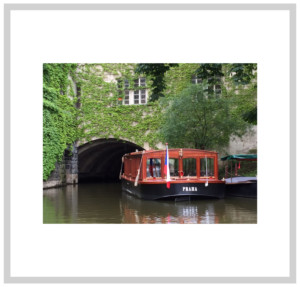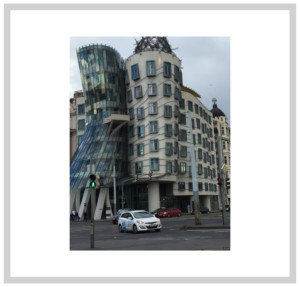 Dennis’ father was American spy during the Cold War and he thought Prague was the most beautiful city in Europe. And it may be. Physically unscathed during the World wars, it carries the majesty of layers of architectural history: Gothic, Renaissance, Baroque, Romanesque, Art Nouveau and Neo Classical and even Frank Gehry’s “Dancing House” (an ode to Fred Astaire and Ginger Rogers). It’s a collegiate Architectural History 101 class come to life.
Dennis’ father was American spy during the Cold War and he thought Prague was the most beautiful city in Europe. And it may be. Physically unscathed during the World wars, it carries the majesty of layers of architectural history: Gothic, Renaissance, Baroque, Romanesque, Art Nouveau and Neo Classical and even Frank Gehry’s “Dancing House” (an ode to Fred Astaire and Ginger Rogers). It’s a collegiate Architectural History 101 class come to life.
Residents are justifiably passionate about preserving not only the architecture but also their quality of life and shudder at the thought of change. And political upheavals have delivered 3 mayors in 5 years, to this city of 1.2M so the direction of future growth (estimated to be 400,000 by 2050) has stymied attempts to develop a concensus on how to manage this change.
At the Re:Site conference in June, the Director of the Institute of Planning and Development, Petr Hlaváček and his team presented alternatives to local and visiting planning “insiders. “ His presentation was all the more poignant as rumors swept the conference that he was about to be fired.
 He began his presentation by dryly noting his belief that to succeed, in (planning) work, one must not hate people. This pronouncement brought forth wry chuckles from the Czechs in the audience who knew about Hlavaek’s controversial tenure. Yet the department’s plan is similar to the ideas being floated in every urban planning department in America: it described the possibilities for densifying- adding height on existing buildings, greenfield development, infill and suburbanization (Prague is one of the least dense cities in Europe.)
He began his presentation by dryly noting his belief that to succeed, in (planning) work, one must not hate people. This pronouncement brought forth wry chuckles from the Czechs in the audience who knew about Hlavaek’s controversial tenure. Yet the department’s plan is similar to the ideas being floated in every urban planning department in America: it described the possibilities for densifying- adding height on existing buildings, greenfield development, infill and suburbanization (Prague is one of the least dense cities in Europe.)
Insiders give this new plan a 50-50 chance of succeeding, especially given the challenges of the unstable political environment. The take-away: urban planning in Prague is not dissimilar from that of any American city, but given that, in Prague, beer is cheaper than water at restaurants, at least NIMBY’s can have more fun arguing about it.










Leave A Comment